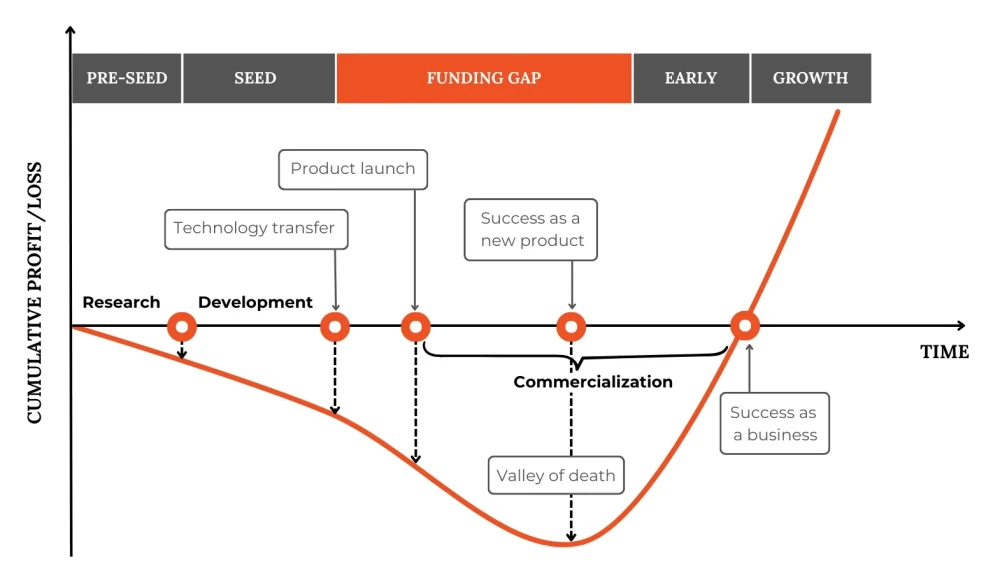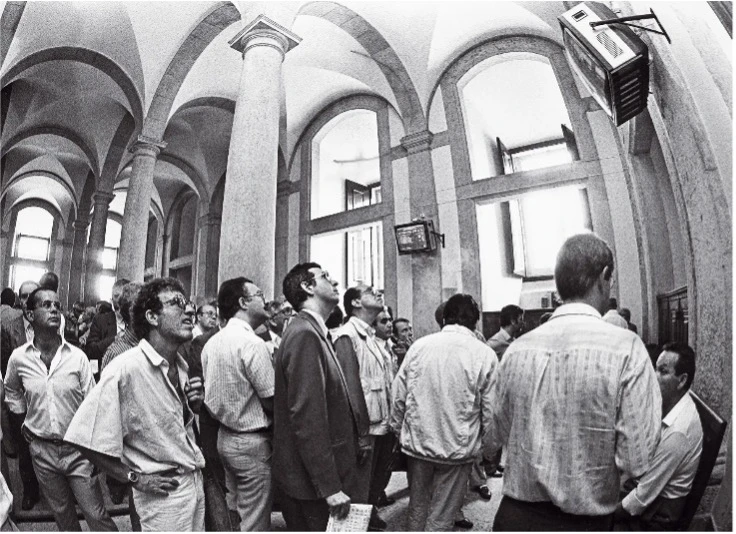
Junior Markets
Why listing in junior markets?
Junior markets bridge the gap between private funding and full public listing. They offer growing companies access to capital, increased visibility, and investor confidence while maintaining flexible regulatory requirements. A smart step toward sustainable expansion.
What justifies a junior market?

The Valley of Death. It is a well-known fact that financing gaps exist for young and new ventures, the main cause being information asymmetries between new venture founders and potential investors. Founders are sometimes unable, and often unwilling, to provide sufficient information to explain why their venture should receive investment. Establishing trust mechanisms between investors and new venture sponsors is greatly helped by a stable investment environment, which protects and encourages both parties to cooperate and engenders trust through established institutional and regulatory frameworks.
Public listing in an easily accessible junior (aka secondary) market greatly facilitates the information flow between new venture founders and potential investors, as well as the acquisition of externally sourced innovation by seasoned corporations and the divestment activities of venture capitalists. This can hardly be achieved in traditional markets due to (i) high listing (and maintenance) costs and (ii) inaccessible listing requirements.
Various exchanges all over the world created junior markets to conveniently address these issues. To do so, a junior market can not be designated as just a smaller version of its main board.
The early years
The nineties of the twentieth century, aka the “roaring nineties” after the title of Nobel Prize winner Joseph Stiglitz’s acclaimed book, were a time of strong economic growth, steady job creation, low inflation, rising productivity, economic boom, and surging stock markets that resulted from a combination of rapid technological changes and sound central monetary policies.



Recent developments in capital markets

Recent developments in capital markets suggest that winds of change have been sweeping over the financial world. Namely:
- The number of publicly traded firms has been steadily declining, while private capital to fund late-stage start-ups has become more available.
- Public equity markets are providing decreasing resources to SMEs: while the overall capitalisation of public equity markets has been rising, the number of IPOs and the number of listed countries have declined in several countries, that is, capitalisation is becoming increasingly concentrated in large firms.
- Over the past two decades, three quarters of the IPOs in Europe have taken place in second-tier markets such as London’s Alternative Investment Market, that is the number of listed small firms has been steadily increasing.
How does a junior market compare with a main market?
Junior markets offer a flexible, cost-effective path to public listing. With lighter regulations and lower entry barriers, they help growing companies access capital while preparing for larger markets. Their tailored approach fosters innovation, investment, and long-term growth.
This table presents the admissions criteria, continuing obligations and costs and benefits of membership of the Main Market and AIM during our sample period. In more recent years the criteria, obligations and costs have gradually evolved.
| Main market | Alternative investment market |
| Admissions requirements | |
| Higher minumum of shares in public hands Normally 3 year trading record required Pre-vetting of admission documents by a listing authority Admission takes several months Minimum market capitalisation on entry Higher admission fees |
No, or lower, minimum shares in public hands |
| Continuing obligations | |
| Higher admission fees |
Lower annual fee |